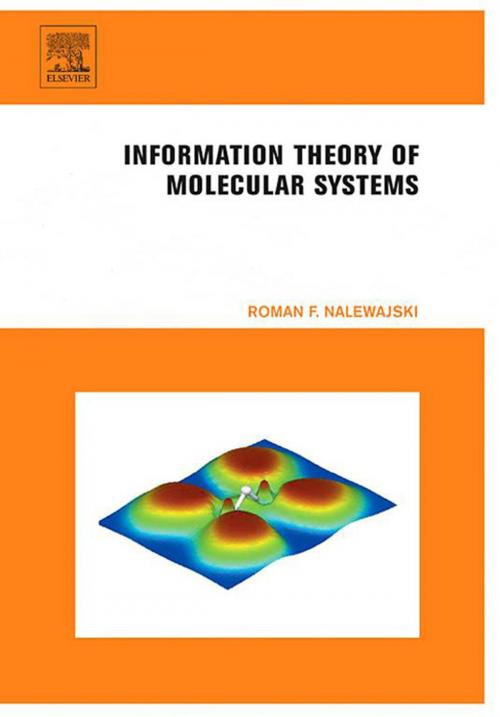Information Theory of Molecular Systems
Nonfiction, Science & Nature, Science, Chemistry, Physical & Theoretical, Computers, Advanced Computing, Theory, Reference & Language, Reference| Author: | Roman F. Nalewajski | ISBN: | 9780080459745 |
| Publisher: | Elsevier Science | Publication: | March 31, 2006 |
| Imprint: | Elsevier Science | Language: | English |
| Author: | Roman F. Nalewajski |
| ISBN: | 9780080459745 |
| Publisher: | Elsevier Science |
| Publication: | March 31, 2006 |
| Imprint: | Elsevier Science |
| Language: | English |
As well as providing a unified outlook on physics, Information Theory (IT) has numerous applications in chemistry and biology owing to its ability to provide a measure of the entropy/information contained within probability distributions and criteria of their information "distance" (similarity) and independence. Information Theory of Molecular Systems applies standard IT to classical problems in the theory of electronic structure and chemical reactivity.
The book starts by introducing the basic concepts of modern electronic structure/reactivity theory based upon the Density Functional Theory (DFT), followed by an outline of the main ideas and techniques of IT, including several illustrative applications to molecular systems. Coverage includes information origins of the chemical bond, unbiased definition of molecular fragments, adequate entropic measures of their internal (intra-fragment) and external (inter-fragment) bond-orders and valence-numbers, descriptors of their chemical reactivity, and information criteria of their similarity and independence.
Information Theory of Molecular Systems is recommended to graduate students and researchers interested in fresh ideas in the theory of electronic structure and chemical reactivity.
·Provides powerful tools for tackling both classical and new problems in the theory of the molecular electronic structure and chemical reactivity
·Introduces basic concepts of the modern electronic structure/reactivity theory based upon the Density Functional Theory (DFT)
·Outlines main ideas and techniques of Information Theory
As well as providing a unified outlook on physics, Information Theory (IT) has numerous applications in chemistry and biology owing to its ability to provide a measure of the entropy/information contained within probability distributions and criteria of their information "distance" (similarity) and independence. Information Theory of Molecular Systems applies standard IT to classical problems in the theory of electronic structure and chemical reactivity.
The book starts by introducing the basic concepts of modern electronic structure/reactivity theory based upon the Density Functional Theory (DFT), followed by an outline of the main ideas and techniques of IT, including several illustrative applications to molecular systems. Coverage includes information origins of the chemical bond, unbiased definition of molecular fragments, adequate entropic measures of their internal (intra-fragment) and external (inter-fragment) bond-orders and valence-numbers, descriptors of their chemical reactivity, and information criteria of their similarity and independence.
Information Theory of Molecular Systems is recommended to graduate students and researchers interested in fresh ideas in the theory of electronic structure and chemical reactivity.
·Provides powerful tools for tackling both classical and new problems in the theory of the molecular electronic structure and chemical reactivity
·Introduces basic concepts of the modern electronic structure/reactivity theory based upon the Density Functional Theory (DFT)
·Outlines main ideas and techniques of Information Theory















